
7 craft villages to visit around Hue city
- on Oct 18, 2019 By: BN
If the ancient capital tells its fascinating story through the citadel, palaces, tombs of kings, temples and pagodas that all seduce visitors by their majesty and poetry setting without parallel, then a walk in its surroundings also reveals some nice surprises. Go meet the Hue peoples who perpetuate centuries-old traditions in craft villages scattered in the peaceful orchards along the Perfume River!
Sinh Folk Painting Village
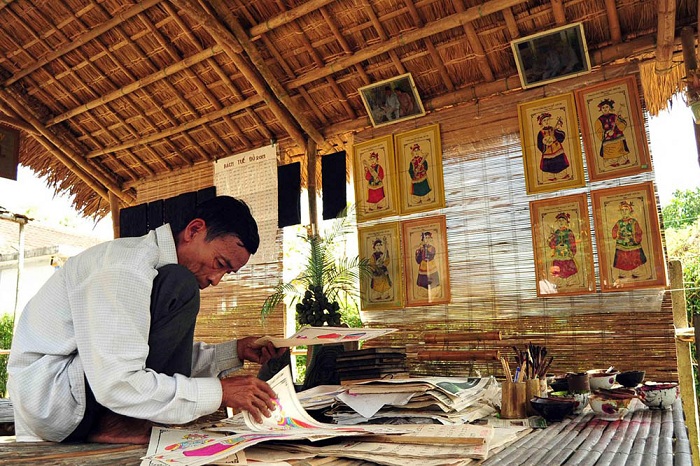
If agriculture is its first activity, the Sinh village is known throughout the country for the making of folk paintings. As well as the colorful Dong Ho and Hang Trong paintings that make the reputation of northern villages, those of the Sinh are appreciated by a remarkable know-how dedicated to the folk culture. The craftsmen draw their inspiration from customary practices and especially the spiritual life, a particularly sacred world of the Hue peoples.
The materials and tools used for the creating of paintings are essentially from craftsmanship. The images are printed on a traditional “do” paper and traditionally apply the original colors of the plants. Daily life, ancestor worship, religious rites, men and women in traditional dress of yesteryear... Everything that is attached to ancestral traditions is highlighted under the hands of craftsmen. A fully manual work based on the adaptation and imagination of the craftsman makes each painting unique with its own blend of colours.
Access: Phu Mau Ward, Phu Vang District, about 8 km from Hue, Access: Phu Mau Ward, Phu Vang District, about 8 km from Hue, downstream of Perfume River.
Villages of conical hats

Known as a cultural symbol of the country, the image of a conical hat is inseparable from the charm of the women of Hue and this city full of poetry. Therefore, it is not surprising to find villages making this headgear that abounded in the vicinity of the ancient capital city like Da Le, Phu Cam, Doc So, Trieu Tay, and Kim Long. A know-how forged over hundreds of years leaves its footprints at every creation made from banana leaf, bamboo stalks and a lot of patience. The work demands certain steps be taken, like material sorting, cutting, sewing of leaves, creation of patterns and then finishing the hat with layers of resin.
The most famous of Hue's conical hats is "non bai tho" or poem conical hat which is a true work of art. Touch your soul with poetry by wearing a simple object that invites admiration. It is also one of the first memories experienced by visitors to Hue and Vietnam. If you are tempted, go to the known villages in Hue for their beautiful conical hats, such as Tay Ho, My Lam, Phu Cam, Phuoc Vinh, Doc So, and Trieu Tay which are not far from Hue city.
Thanh Tien Paper Flower Village
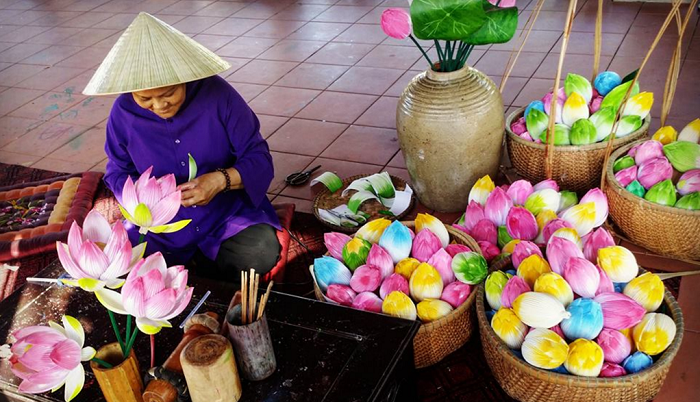
The twelfth lunar month is a very special occasion for the inhabitants of Thanh Tien. This is when families spend time immersing themselves in paper flowers of any colour.
Born of the religious customs to which the inhabitants of this central region attach themselves, the paper flowers on the altars of geniuses and ancestors are renewed only once a year. This requires a big job for the craftsmen of Thanh Tien during the few months at the end of the year. They really have perfected their skills over the past four centuries. Over time, the Thanh Tien flowers under the hands and creativity of the talented, also address the different occasions, festivities, and decorations of the house... You will also see beautiful lotus leaves of Thanh Tien at the international festival held in Hue every two years.
Access: Phu Mau Commune, Phu Vang District, 10 kilometers from Hue
Thuy Xuan Incense Village

Another specialty of Hue craftsmanship is the incense sticks which are in the spotlight at Thuy Xuan Village. This manufacturing involves the majority of families who give glamour to an activity inherent in the important traditional rites in Vietnam, Buddhist ceremonies and ancestor worship. The day begins with a pleasant fragrance that embellishes all the little corners of the village. From one workshop to the next, bunches of flowers of any colour are beautifully arranged in the courtyards of the houses, and really grab your attention upon arrival. This is an opportunity to learn about some of the traditional techniques that make these beautiful pictures of a legacy that is vigorously kept up.
Access: Huyen Tran Cong Chua Street, 7 kilometers from Hue City Center.
Bronze Casting Village
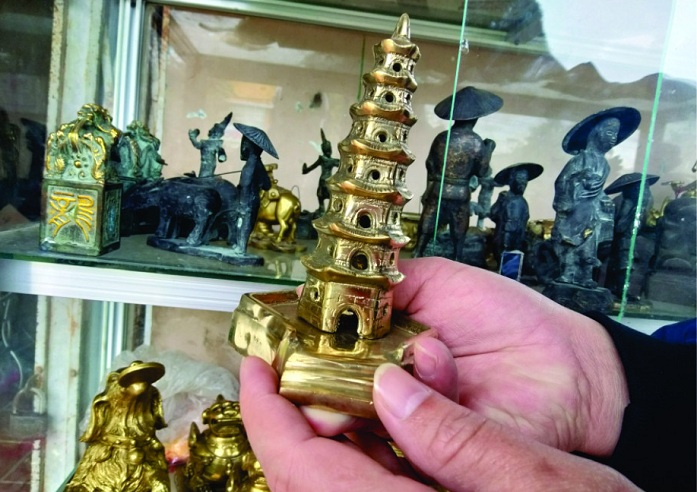
Also known as Phuong Duc, meaning the founders' quarter, its history goes back to the era of Lord Nguyen Hoang in the 16th century. His expertise was enriched mainly by the manufacturers of the two known villages at the time, Kinh Nhon and Bon Bo. This was the birthplace of the talented workers who created many precious objects presented in the palaces of the royal citadel and pagodas of Hue, including the famous bell in Thien Mu. From weapons for the national defense at the beginning to objects of worship and various souvenirs in bronze for the tourists, staying faithful to tradition remains widespread in the Kinh Nhon village, and is the only one exercising this activity to this day.
By stopping at a Phuong Duc workshop, you will be amazed by the strong attachment of craftsmen to each stage of their work, showing their enormous patience and attention to detail.
Access: Thuy Xuan Ward, only 3 kilometers southwest of Hue city
Phuoc Tich Ceramic Village

By passing under its shaded entrance, you will find yourself in a traditional old village classified as a national vestige, the second in the country after Duong Lam in Hanoi. More than 500 years old, the potters of Phuoc Tich have preserved from generation to generation the trade which served the royal meals of the Nguyen kings, from Minh Mang to Khai Dinh. This place is known especially for the everyday ceramic products that follow the sellers up to Nghe An, the Mekong Delta and also other regions. The best items were selected and exported to take place at a tea ceremony in Japan.
After a little introduction to making some nice memories by yourself, a walk around twentieth century homes with typical architecture of Hue is not to be missed. The "nha ruong" or beam house is part of the cultural heritage of families and the country. In addition to these wooden jewels, a dozen colorful family temples rich in sculptures are also very much worth a visit.
Access: Phong Hoa Commune, Phong Dien District, about 45 km from the center of Hue to the north
>> Read moreThe rural face of Hue at Phuoc Tich Village
Ke Mon Goldsmith Village
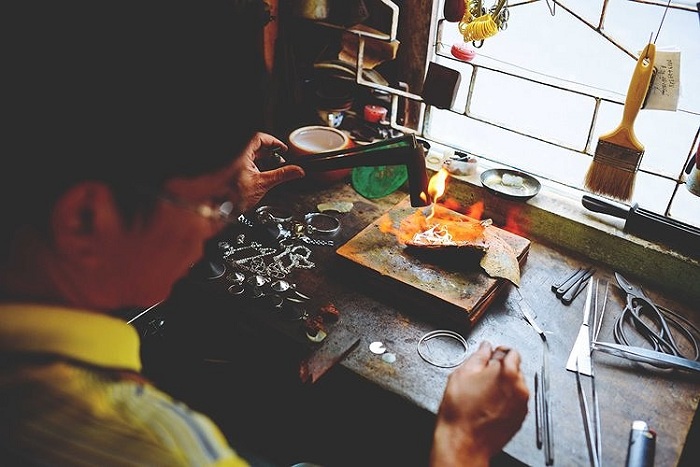
If an encounter with goldsmiths at a craft workshop piques your interest for history and tradition, head to Ke Mon, a small village located about forty kilometers from Hue.
This tradition was seen in the late eighteenth century when Cao Dinh Bon, a goldsmith from Thanh Hoa came to settle in Hue and transferred his knowledge to younger generations. The gold and silver products of Ke Mon were appreciated by the wealthy and mandarin classes living in Hue at the time.
Access: Dien Mon Commune, Phong Dien District, about 40 km northeast of downtown Hue
Each with its own treasure, the craft villages of Hue and the rest of the country offer a pleasant parenthesis revealing both the authentic rural painting of Vietnam and a tradition highlighted by great, dedicated enthusiasts.
Related articles:
>> Top 4 most beautiful beaches of Hue
>> Hue royal meal, exceptional heritage of Vietnamese cuisine
>> What to do in Hue in 1 or 2 days?
>> 3 good reasons to love Hue imperial city
>> Emperor Khai Dinh Royal Tomb, a meeting between Eastern and Western
Comment
Other Blog
Categories
Latest News
on 27 Apr, 2023      
on 15 Apr, 2023      
on 28 Mar, 2023      
 Español
Español Français
Français






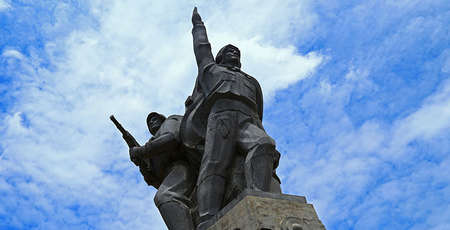
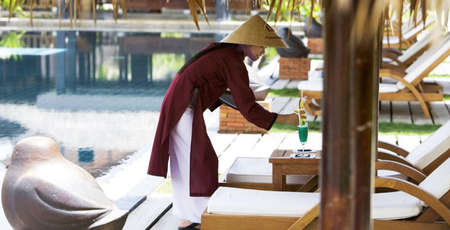
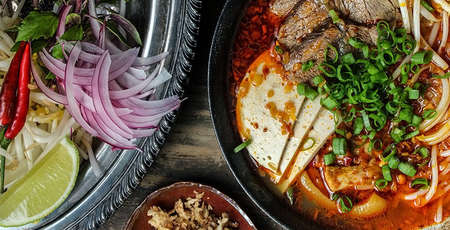
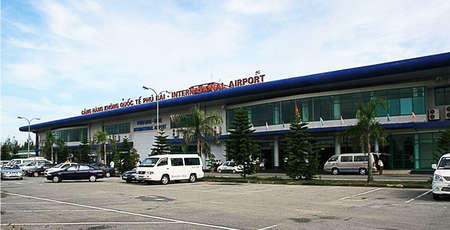
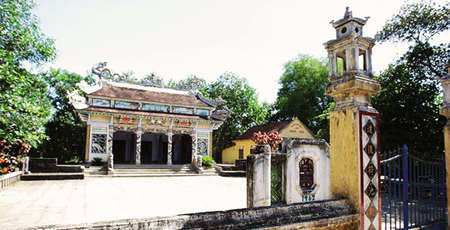
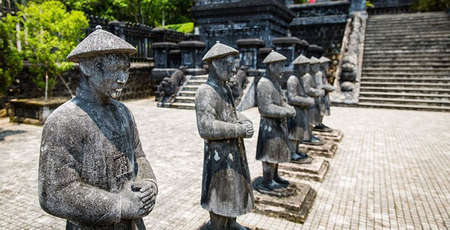







F
on Jan 3, 2024Igor Mozetic
on Apr 8, 2023Ira Beale
on Feb 10, 2023Phạm Phú Toàn
on Jan 28, 2023Max Stover
on Jan 11, 2023